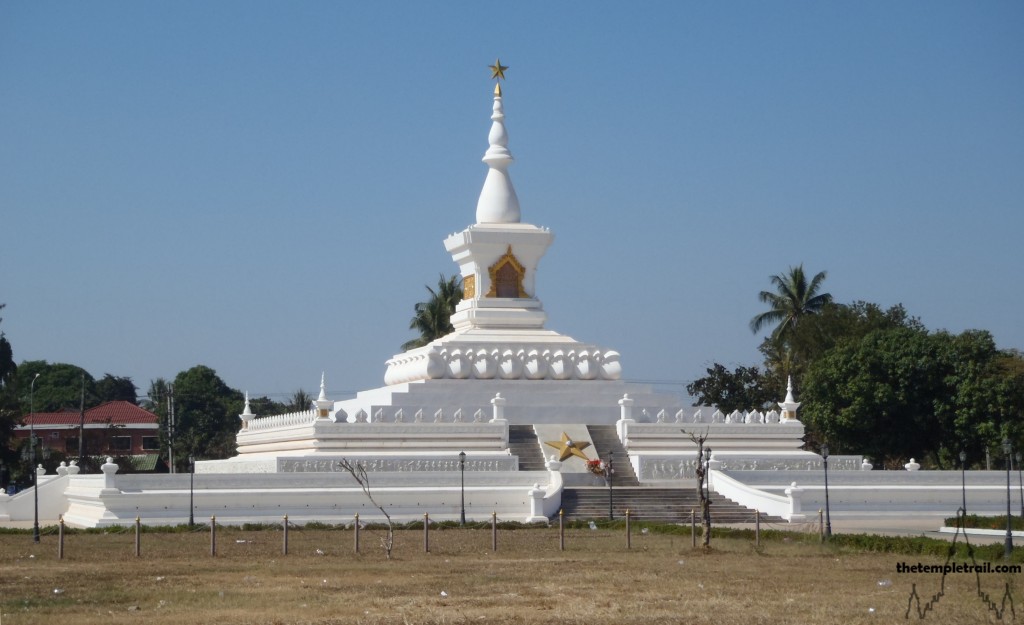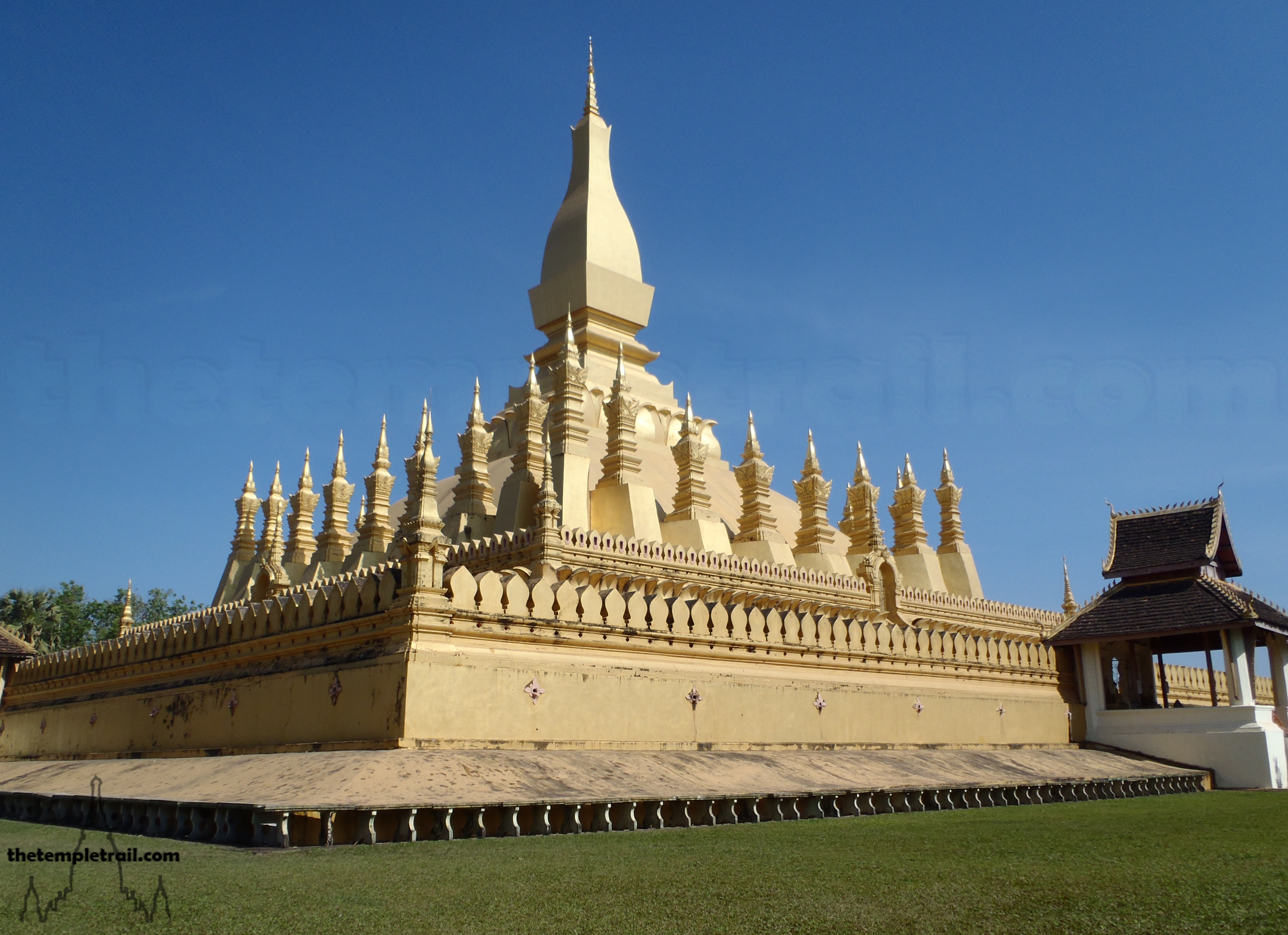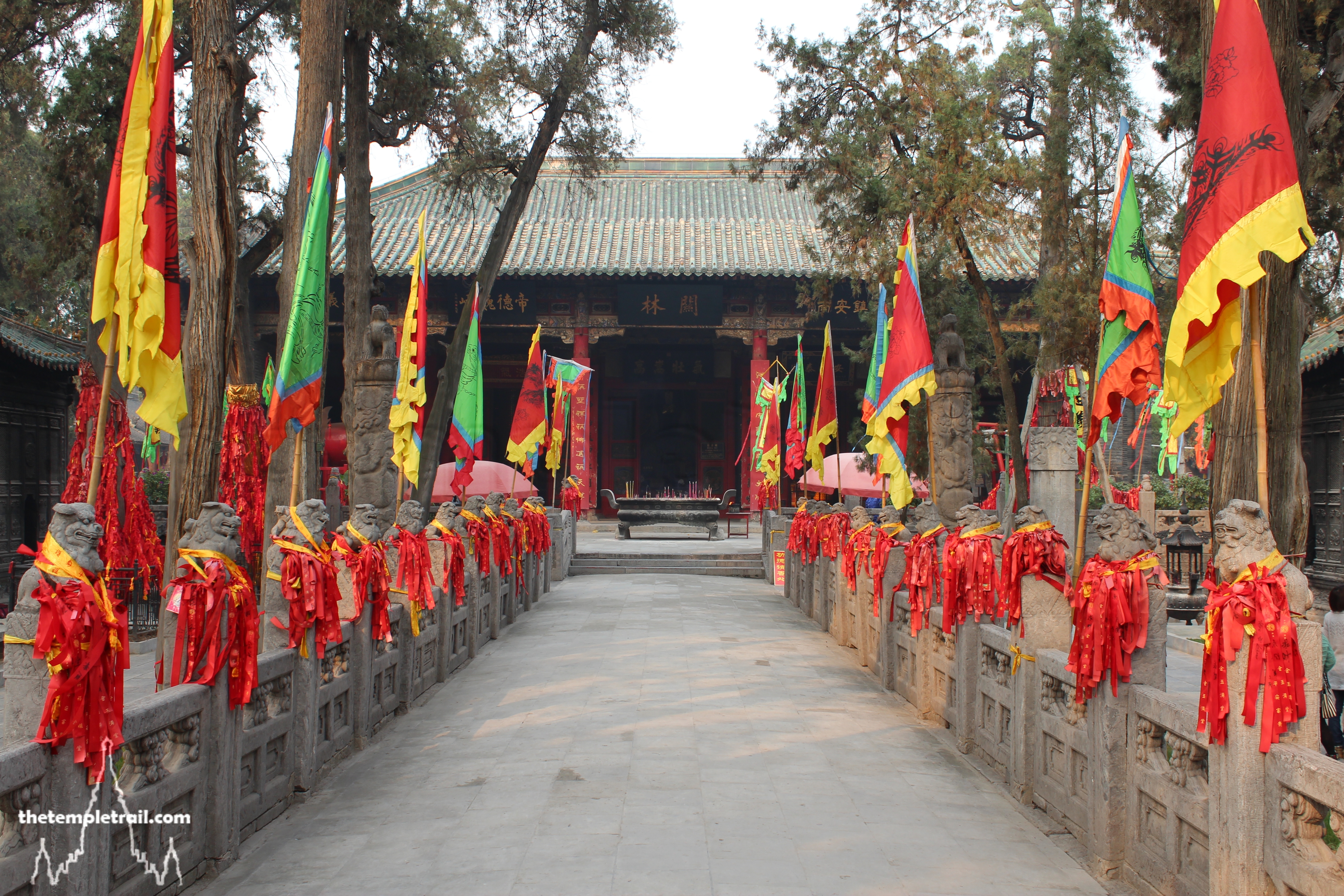The sun beats down on your head and neck as you crank the pedals of the bodged together rental bike. The impressive Lane Xang Avenue leads you through the victory arch of Patouxai, the self-proclaimed monster of concrete. Made from materials donated by the US government intended for the construction of an airport, Patouxai is nicknamed the vertical runway. Under its bulk is a shady space with a garishly molded and painted vaulted ceiling. Depictions of Indra watch you from above as you quickly demolish another shoddily constructed creation; a bowl of cheap noodles that seem only to fill your stomach.
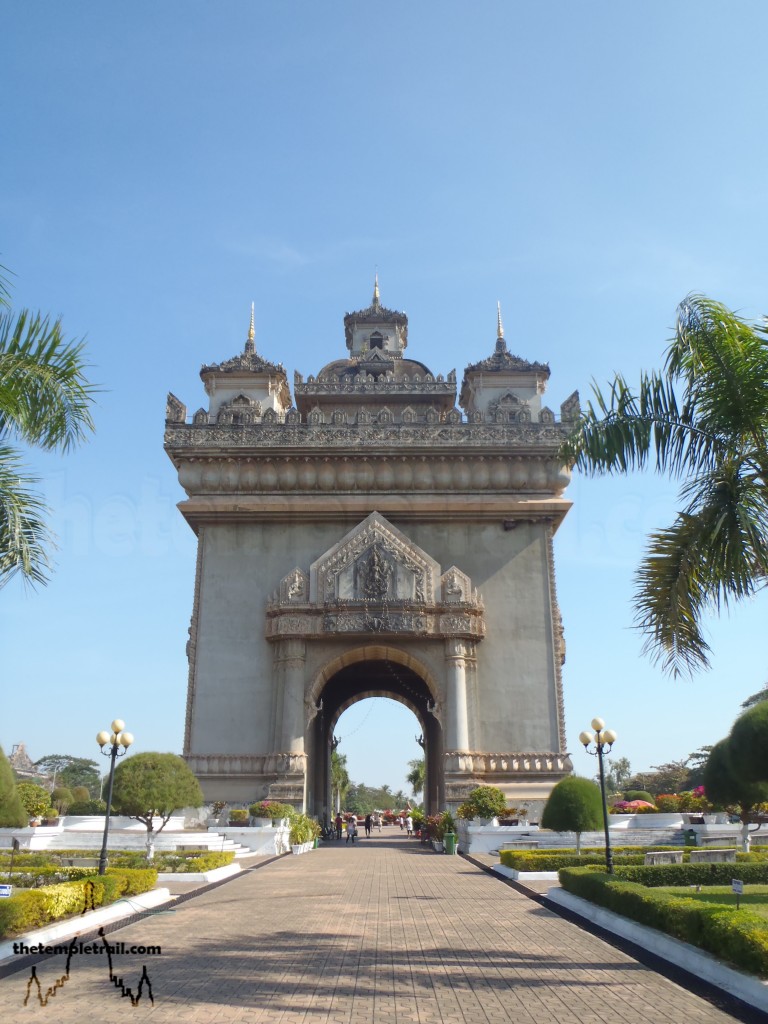
Vientiane is a city that struggles with its identity. It sits just on the other side of the Mekong River from its southern neighbor, and historical foe, Thailand. During the communist era of the Pathet Lao, much of this low rise and pocket sized capital was constructed in drab and dreary concrete. Dotted throughout are a series of temples that add a sparkle of colour to a city that is, more often than not, passed through as a transit point from Thailand to other Laotian destinations. If you give it the benefit of the doubt, you will see that Vientiane is going through somewhat of a renaissance. It is being cleaned up and its gems are being polished.
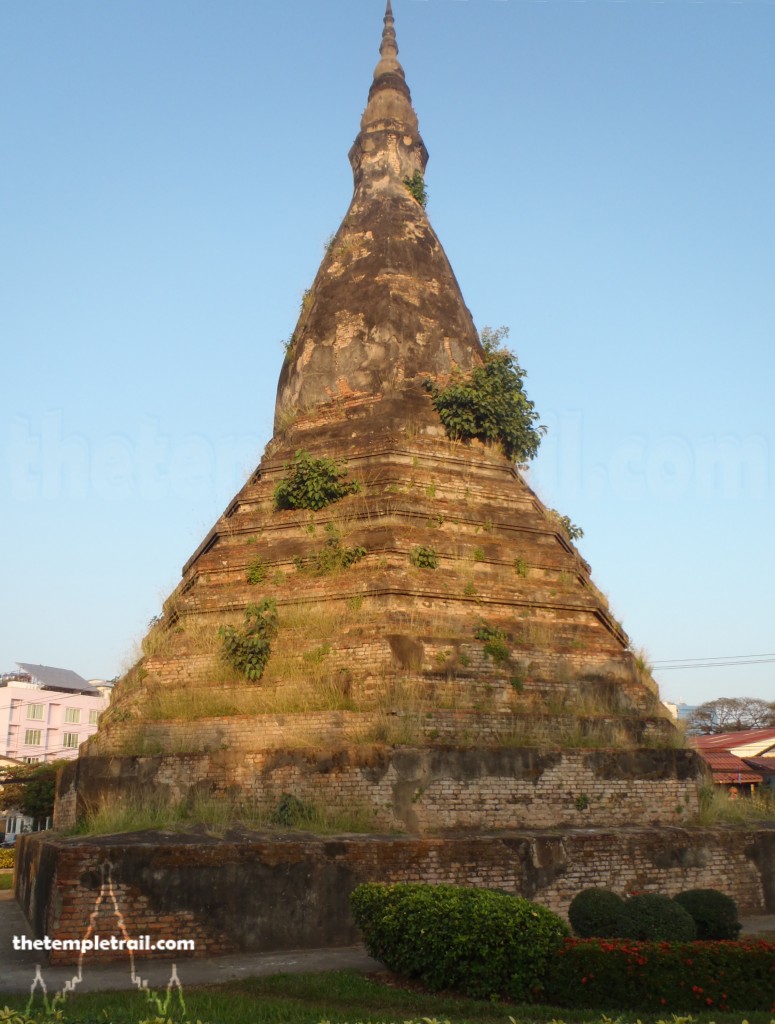
Taking the road that leads from the eastern archway, you head to a gem that has not yet been brought to lustre, but is beautiful in its grubbiness. That Dam (the Black Stupa), is an incredibly significant part of Lao culture, pride and heritage. In the late 18th century, the Kingdom of Vientiane, was conquered by the Siamese. In 1827, the Lao rebelled, but were soon put down by the Siamese, who sacked and looted the city. The stupa was stripped of its gold coating, hence the name black stupa, as it still bears the scorches of the fires used to melt the gold. That Dam is said to be the home of a powerful seven-headed Naga that came out of his home in the stupa during the 1827 conflict and protected the people of the city from the Siamese aggressors. The locals say that the Naga still lives in the stupa and will come out whenever the city is threatened. The stupa itself is a little overgrown, but remains in its authentic state. When the French conquered Indochina in the late 19th century That Dam and much of the depopulated Vientiane were being swallowed by the forest.
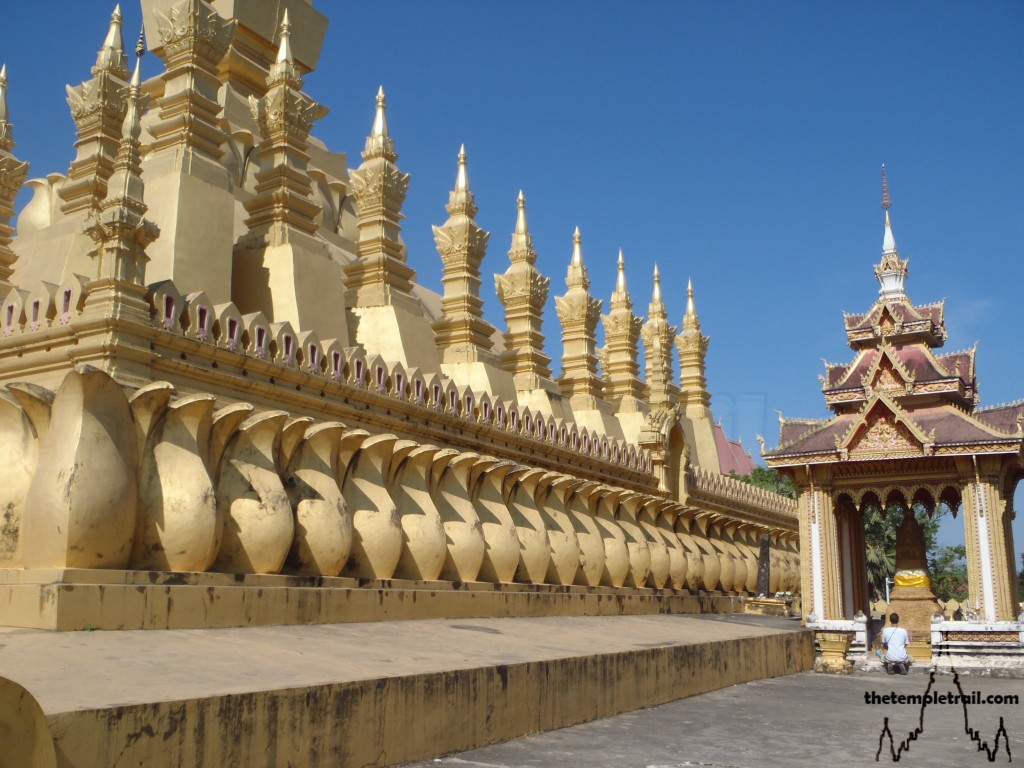
You double-back and return to the monster of concrete. From here, you head north and the rickety bicycle complains as you put it through its paces. The road splits and, taking the right fork, you head straight for the real pride of Vientiane. In the distance a twinkling shape begins to form. It looks almost like a giant crown, but as you get nearer, you can see that it is a stupa of unique design.
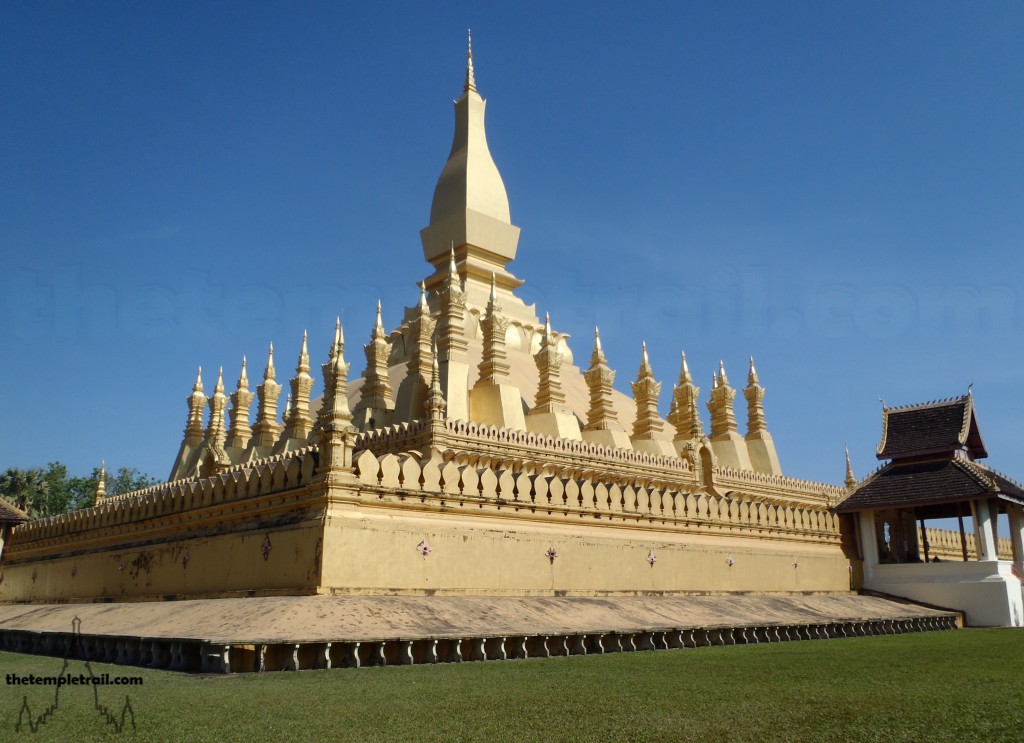
The Lao believe that there has been a stupa on this site since the 3rd century AD. Whether or not it once was a Hindu site that was converted to being Buddhist will remain in the realm of imagination, but Pha That Luang (the Great Stupa) inspires the Lao people to dream. The golden stupa has been demolished and plundered countless times. Every time, it has been rebuilt.
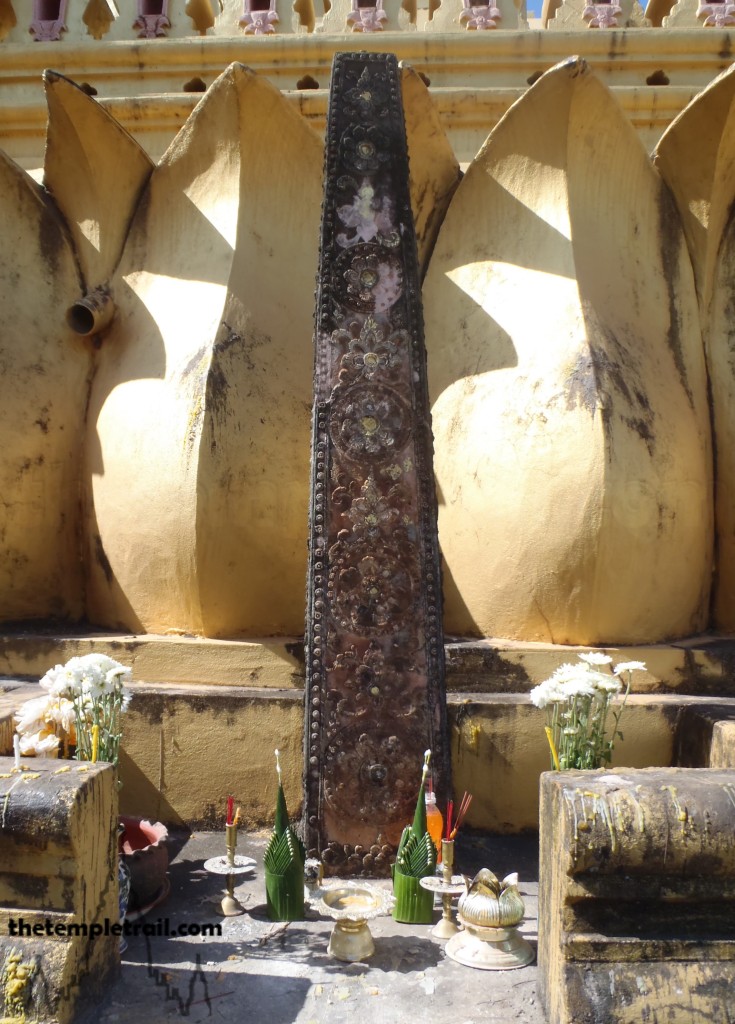
Pha That Luang was said to have originally housed Buddha’s breast bone which was a gift from the Indian emperor Ashoka. In the 13th century, the Khmer’s built a temple on the ruins of the earlier stupa that then fell into disrepair itself. In the mid-16th century, the stupa began to take the form we see reproduced today. King Setthathirat, who had relocated from Luang Prabang, had a 45 metre high stupa built that was surrounded by 60 subordinate stupas. The large golden stupa was subsequently the target for Burmese, Siamese and Chinese looting and finally almost complete destruction during the 1827 Thai sacking of Vientiane. It underwent two restorations by the French, who found it completely abandoned and overgrown, in 1900 and the 1930s. Its current incarnation is post-World War II.
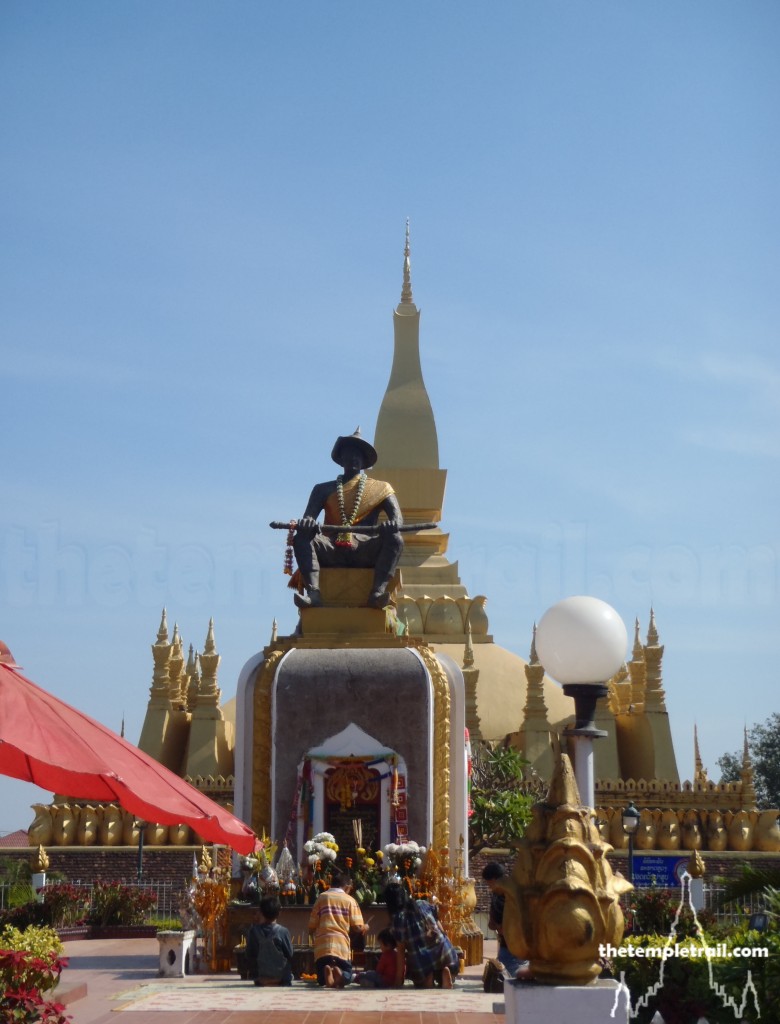
As you approach the site from the south, the sun lights up the golden spires of the Lao-style stupa. Passing the statue of King Setthathirat, you enter the first level of the three tiered structure. This 67 square metre level houses ancient statues of Buddha and of Hindu gods in the gallery of the outer wall. Here a statue of the Khmer ruler Jayavarman VII is also worshipped and his gold leaf covered face is testament to this.
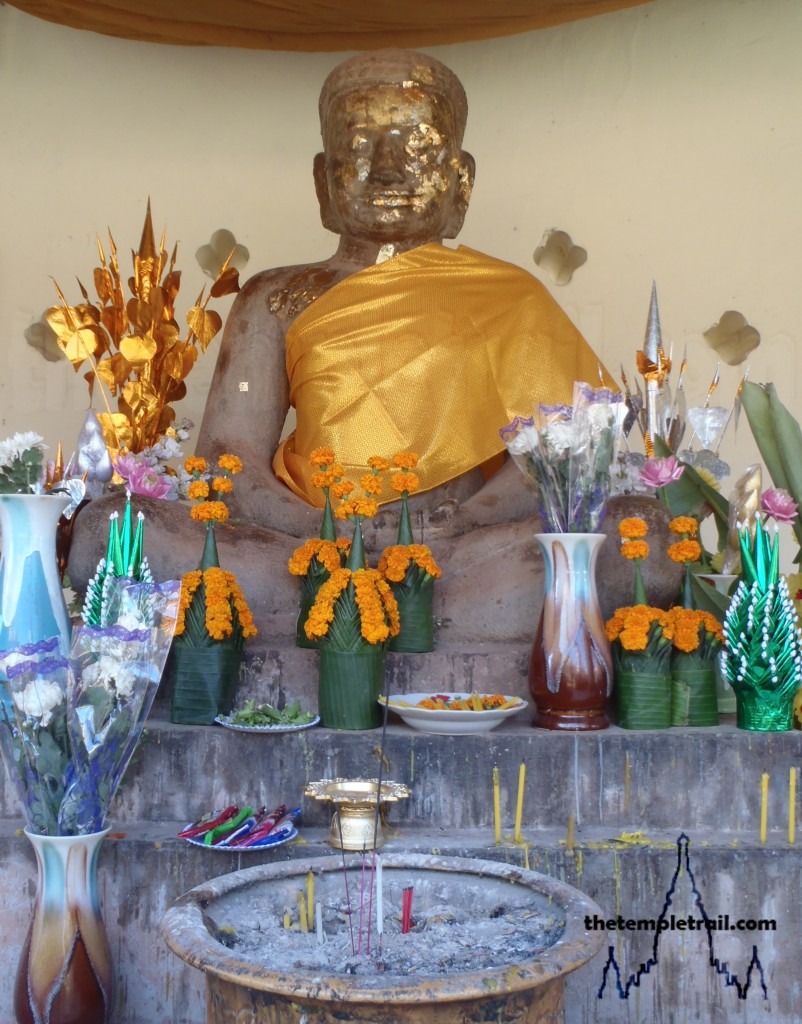
Walking around the inside of the monument, you circle large golden lotus petals that mark the boundary between the second and third tiers. You can climb to the second, 47 square metre level, but gates bar your entrance to the holiest third level. The actual central stupa remains beyond your reach. Perhaps, after centuries of foreign destruction, the Lao are reluctant to grant easy access to the stupa. Looking through the gateway, the pyramidal base seems much bigger than its 29 square metres. It tapers into a slender square lotus bud that reaches up to the sky. The elegant monument is a survivor, much like the Lao people. Their destinies seem intertwined.
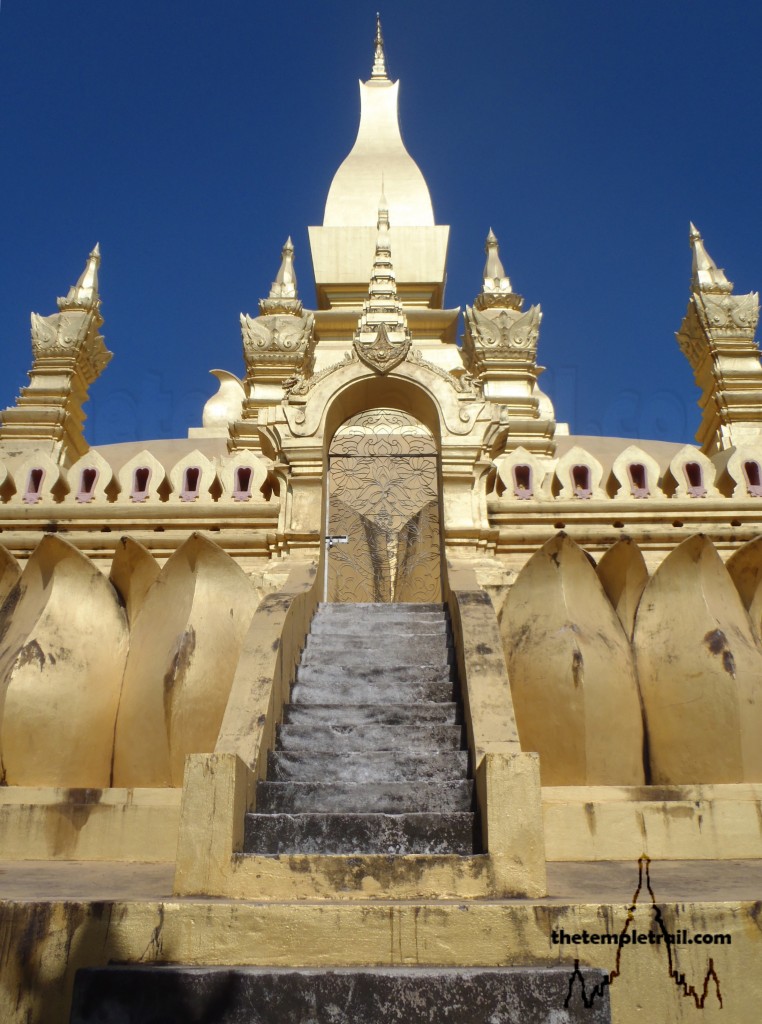
Around the Pha That Luang are some fairly modern temple buildings on the site of older ones. There is even a white stupa that sports a communist star. They are all playing second fiddle to the real polished jewel in Vientiane. As you remount your bike and head past the construction site of a large statue of Buddha in Parinibbana, you get the feeling that the history of this site is only just beginning. As more and more temple structures are built around it in a push to reignite the culture of Vientiane, you wonder what lies in store for this amazing stupa that is almost drowning in history. Looking back over your shoulder, Pha That Luang twinkles farewell as you head back into the more chaotic modern Vientiane.
